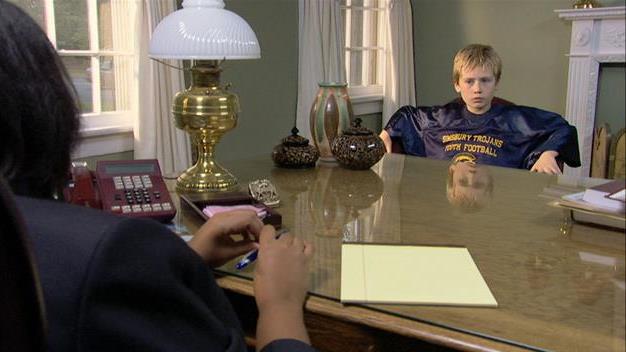
Parents on the brink of child custody and access battles sometimes find comfort in popular myths that minimize the risks involved to their children. Parents who rely upon those myths do so at the risk of their children’s emotional health.
Let’s take a look at three of the most popular of the “kids and courts” myths and what makes them so dangerous for children.
Myth I: “Judges Protect Children During Divorce.”
That sounds reasonable enough, right? The problem is that judges are not aware of the suffering a child may be experiencing while his/her parents are slugging it out in family court. And even if judges were aware, there isn’t much they can do about it.
Part of the problem is timing. Even in custody and access cases in which judges become involved with children’s issues, that involvement usually doesn’t begin until trial has begun or is imminent. And that’s too late to protect against the kind of psychological damage that custody battles and other high-conflict divorces can inflict upon children.
The risk of such damage is substantial. Extensive research has established that the kind of prolonged parental conflict present in these battles is toxic to children who experience it. And as if that weren’t bad enough, battles over children during a divorce (“fully contested divorces”) also deprives children of the very things they need most.
What are those things? A “Top 4 List” of the needs of children of divorce would read something like this:
-
An end to their parents’ fighting
-
An end to uncertainty about where and with whom they will be living
-
A return to some degree of normalcy in their lives
-
Security in knowing that their parents will continue to love and care for them
Custody/access battles typically deprive children of not 1 or 2, but all of the above.
It’s true that at trial, family judges try to do what’s in children’s best interests. But that doesn’t eliminate the impact of months of anxiety and stress for children whose parents are too embroiled in their own conflict to attend to the needs of their kids.
Nor can judges spare children the awful experience of the custody/access evaluation process. In fact, judges rely on that process for information and assessments to use in deciding cases. Furthermore, judges don’t supervise the process; by the time a case comes before a judge for trial, the evaluation is done.
The bottom line is that even the most conscientious judges are not in a position to offer relief to children suffering the emotional impact of high-conflict divorce. No one can protect children from high-conflict divorce except parents dedicated to avoiding it by working out their differences in their children’s best interests.
Myths 2 & 3: “The custody evaluation process is designed to protect children.” “All of the professionals involved are acting on the children’s behalf.”
First of all, the custody evaluation process is not designed to protect children. It is designed to gather information for the court.
The goal of custody evaluations—determining what’s in a child’s best interests—is certainly a worthy one. Unfortunately, too often the evaluation process itself humiliates, frightens and compromises children.
A host of divorce professionals can become involved in the evaluation process. Court services or “family relations” counselors evaluate and make recommendations to the court regarding custody, parental access, and related matters. Attorneys may be appointed to represent minor children. Guardians ad litem may be appointed to shed light on the best interests of children unable to articulate their needs and desires. Mental health evaluators can be appointed by the court or privately retained to weigh in with their opinions. Parenting coordinators may be used to work with, and report back to the court regarding parents who are acting out or having particular difficulty co-parenting.
Each of these professionals has a specific role to play. But none of them bears the responsibility of protecting children from the process itself. Interviews of children conducted by these professionals—no matter how well intentioned or how adeptly performed—can humiliate children and put them in positions where they feel obliged to defend or choose one parent over another.
The evaluation process can also disturb children in ways that go unnoticed by professionals and parents alike. An extracurricular activity missed while a child meets with an attorney or custody evaluator, or a play-date prevented by an inflexible court-ordered visitation schedule might not seem like a big deal. But for children already reeling from the break-up of their family, the cumulative effect of such disruptions can become overwhelming.
Where children may be at risk of abuse or neglect due to a parent’s mental illness or untreated substance abuse, resort to the courts may indeed be necessary. But absent that, parents and their lawyers have an obligation to try to quickly resolve child-related matters in the children’s best interests.
Myths may offer comfort to some parents embroiled in a high-conflict divorce. But again, the truth is that no one can fully protect children from the dangers of emotional harm lurking in the high grass of high-conflict divorce and custody evaluations.
The myths discussed in this article are among those dramatically portrayed in Talk To Strangers, the Telly Award-winning short film about a brother and sister entangled in their parents’ custody battle.
Visit www.ChildCustodyFilm.com to view the film trailer and preview the Talk To Strangers Parent Guide.
More from DivorcedMoms

Leave a Reply